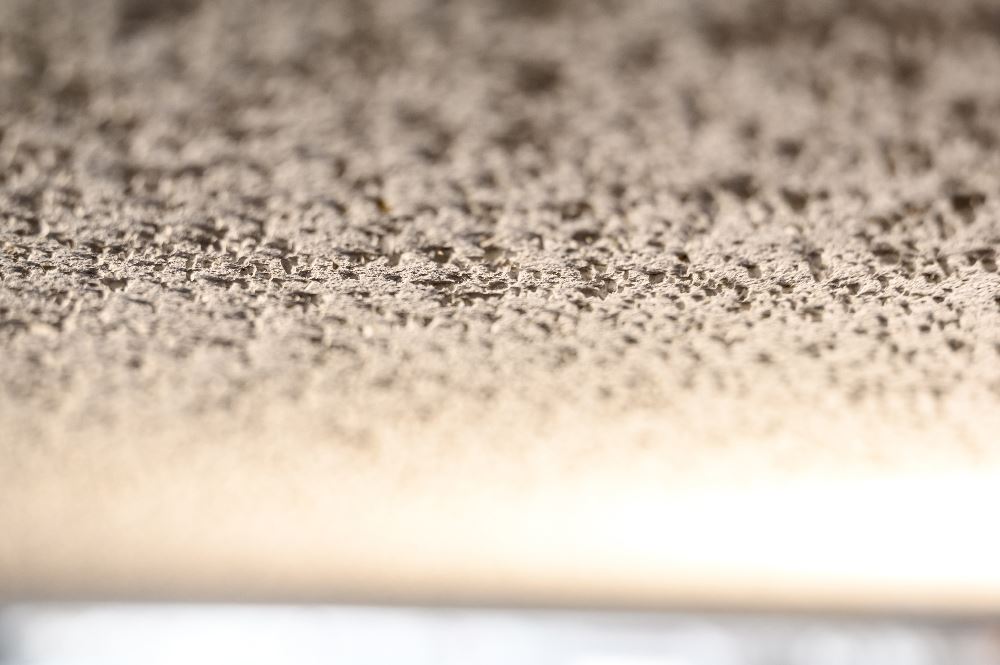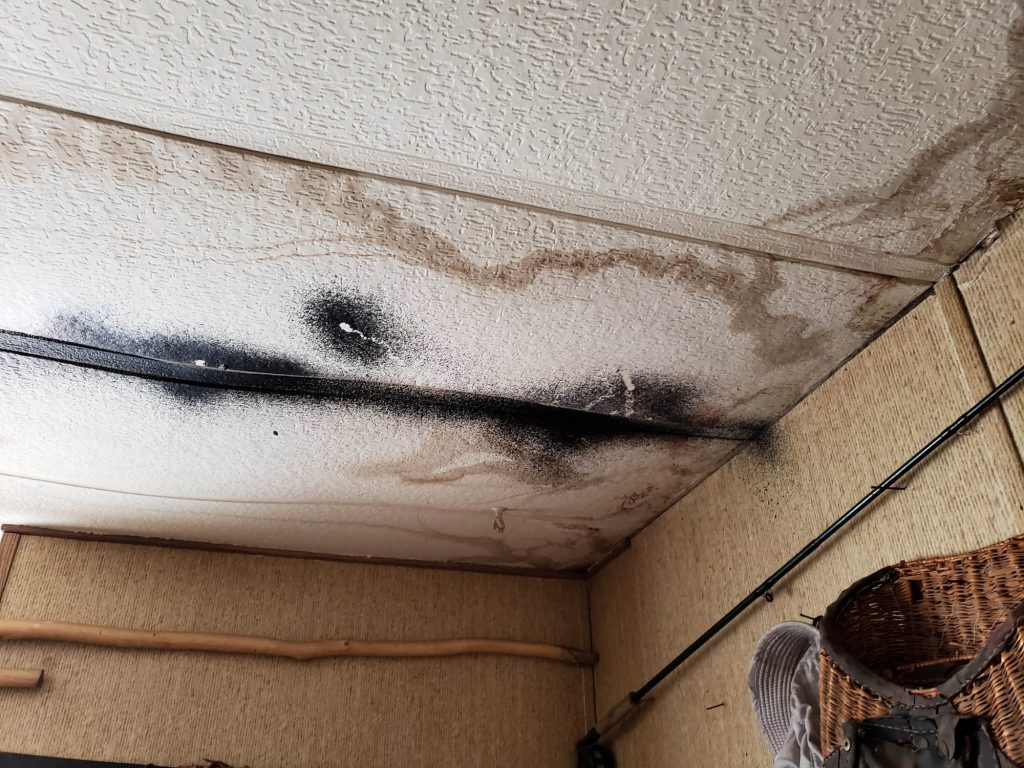Black Mold on Popcorn Ceiling. Popcorn ceilings were once a popular design choice, but their textured surface can create an environment conducive to mold growth, particularly black mold. In this article, we’ll delve into the challenges associated with black mold on popcorn ceilings, providing valuable insights and solutions for homeowners.

The Menace of Black Mold on Popcorn Ceiling
Identifying Black Mold
Black mold, scientifically known as Stachybotrys chartarum, is a type of toxic mold that can thrive in damp and humid environments. Popcorn ceilings, with their porous nature, can become a breeding ground for mold if the conditions are right. Identifying black mold early is crucial, as it poses health risks and can compromise the structural integrity of the ceiling.
Recognizing the Signs
Musty Odor
One of the first signs of black mold on popcorn ceilings is a musty, unpleasant odor. This odor is a result of the mycotoxins produced by the mold, which can have adverse effects on respiratory health.
Discoloration
Black mold often manifests as dark patches on the ceiling. These patches can spread rapidly if left unaddressed, leading to a visually unappealing and potentially hazardous situation.
Respiratory Symptoms
Individuals exposed to black mold may experience respiratory symptoms such as coughing, sneezing, and difficulty breathing. Those with existing respiratory conditions may be particularly vulnerable.
Read too: Understanding the Labor Cost to Texture Ceiling and Enhance Your Home: Unveiling the Secrets
Understanding the Causes
Moisture Accumulation
The primary factor contributing to black mold growth on popcorn ceilings is moisture accumulation. Leaks from the roof or plumbing, high humidity levels, or inadequate ventilation can create the perfect conditions for mold to flourish.
Popcorn Ceiling Texture
The textured surface of popcorn ceilings, while aesthetically pleasing to some, can trap moisture and provide an ideal habitat for mold. The small crevices and irregularities in the texture create hiding spots for spores to proliferate.
Dealing with Black Mold on Popcorn Ceiling
Safety Precautions
Before attempting any mold remediation, it’s essential to prioritize safety. Wear protective gear, including a mask, gloves, and goggles, to minimize exposure to mold spores.
Moisture Source Identification
Address the source of moisture to prevent future mold growth. This may involve repairing leaks, improving ventilation, or addressing any water damage.
Cleaning and Removal
For small areas of black mold, a mixture of water and mild detergent can be used to clean the surface. However, extensive or recurring mold issues may require professional remediation to ensure thorough removal.
Preventive Measures
Proper Ventilation
Improving ventilation in the home can help prevent moisture buildup. Ensure that bathrooms, kitchens, and other areas prone to humidity have adequate ventilation systems in place.
Regular Inspections
Regularly inspect your popcorn ceiling for any signs of water damage, leaks, or mold growth. Early detection can save you from more extensive remediation efforts later on.
Consider Popcorn Ceiling Removal
If the mold problem persists, consider removing the popcorn ceiling altogether. This not only eliminates the mold-friendly texture but also provides an opportunity to address any underlying issues in the ceiling structure.
Conclusion
Black mold on popcorn ceilings is a serious issue that requires prompt attention. By understanding the signs, causes, and effective remediation strategies, homeowners can safeguard their health and property. Remember, prevention is key, and addressing moisture sources is fundamental to keeping black mold at bay. If you suspect black mold in your home, take action promptly to create a safe and healthy living environment.
